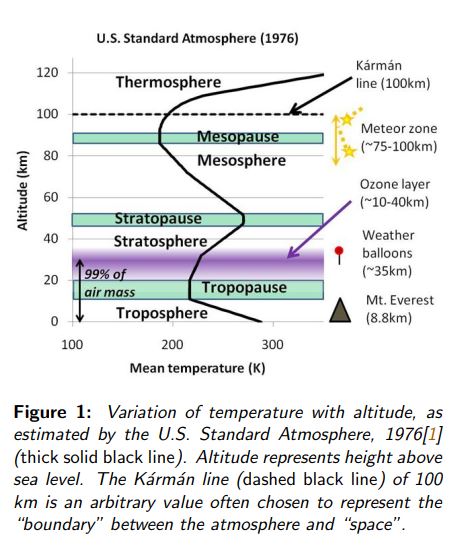This past weekend (July 20 & 21, 2019), I attended the 37th annual meeting of the Doctors for Disaster Preparedness which was held in Tucson. Many interesting talks were presented. Here, I report on one of them.
Irish researchers Michael Connolly and Ronan Connolly presented results from three of their papers based on radiosonde data that may change our understanding of how the atmosphere works.

Traditionally, the temperature of the atmosphere has been estimated from measurements at the bottom of the atmosphere (surface temperatures) and from the top – satellite measurements. The Connolly’s used balloon-borne radiosondes to look within the atmosphere from the surface to 25 miles up.
Their findings contradict the predictions of current atmospheric models, which assume the temperature profiles are strongly influenced by greenhouse gas concentrations. This result suggests that the greenhouse effect plays a much smaller role in barometric temperature profiles than previously assumed.
The Connolly’s discovered a phase change associated with the troposphere-tropopause transition, which also occurs in the lower troposphere under cold, polar winter conditions. They found that when this phase change is considered, the changes in temperature with atmospheric pressure (the barometric temperature profiles) can be described in relatively simple terms. These descriptions do not match the radiative physics-based infra-red cooling/radiative heating explanations used by current models.
The phase change is due to partial multimerization (weak bonding) of the main atmospheric gases, and therefore is a phase change which has not been considered by the current climate models. If this theory is correct, then this offers new insight into the formation of jet streams, tropical cyclones, polar vortices, and more generally, cyclonic and anti-cyclonic conditions. It also offers a new mechanism for the formation of ozone in the ozone layer, and a mechanism for radiative loss from the atmosphere which has been neglected until now.
They also identified a mechanism for mechanical energy transmission that is not considered by current atmospheric models., They call this mechanism “pervection.” They carried out laboratory experiments which reveal that pervection can be several orders of magnitude faster than the three conventional heat transmission mechanisms of conduction, convection and radiation. This could be fast enough to keep the atmosphere in thermodynamic equilibrium over the distances from the troposphere to the stratosphere, thereby contradicting the conventional assumption that the lower atmosphere is only in local, rather than nearly global, thermodynamic equilibrium.

Download the papers:
The Physics Of The Earth’s Atmosphere I. Phase Change Associated With Tropopause
The physics of the Earth’s atmosphere II. Multimerization of atmospheric gases above the
The physics of the Earth’s atmosphere III. Pervective power
The Connolly’s work seems consistent with that of Scottish physicist James Clerk Maxwell who proposed in his 1871 book “Theory of Heat” that the temperature of a planet depends only on gravity, mass of the atmosphere, and heat capacity of the atmosphere. Greenhouse gases have nothing to do with it. (see my post)
Related:
Evidence that CO2 emissions do not intensify the greenhouse effect
The Broken Greenhouse – Why CO2 is a minor player in global climate
An examination of the relationship between temperature and carbon dioxide
Note to readers:
Visit my blog at: https://wryheat.wordpress.com/
Index with links to all my ADI articles: http://wp.me/P3SUNp-1pi
My comprehensive 30-page essay on climate change: http://wp.me/P3SUNp-1bq
A shorter ADI version is at https://arizonadailyindependent.com/2013/08/01/climate-change-in-perspective/
